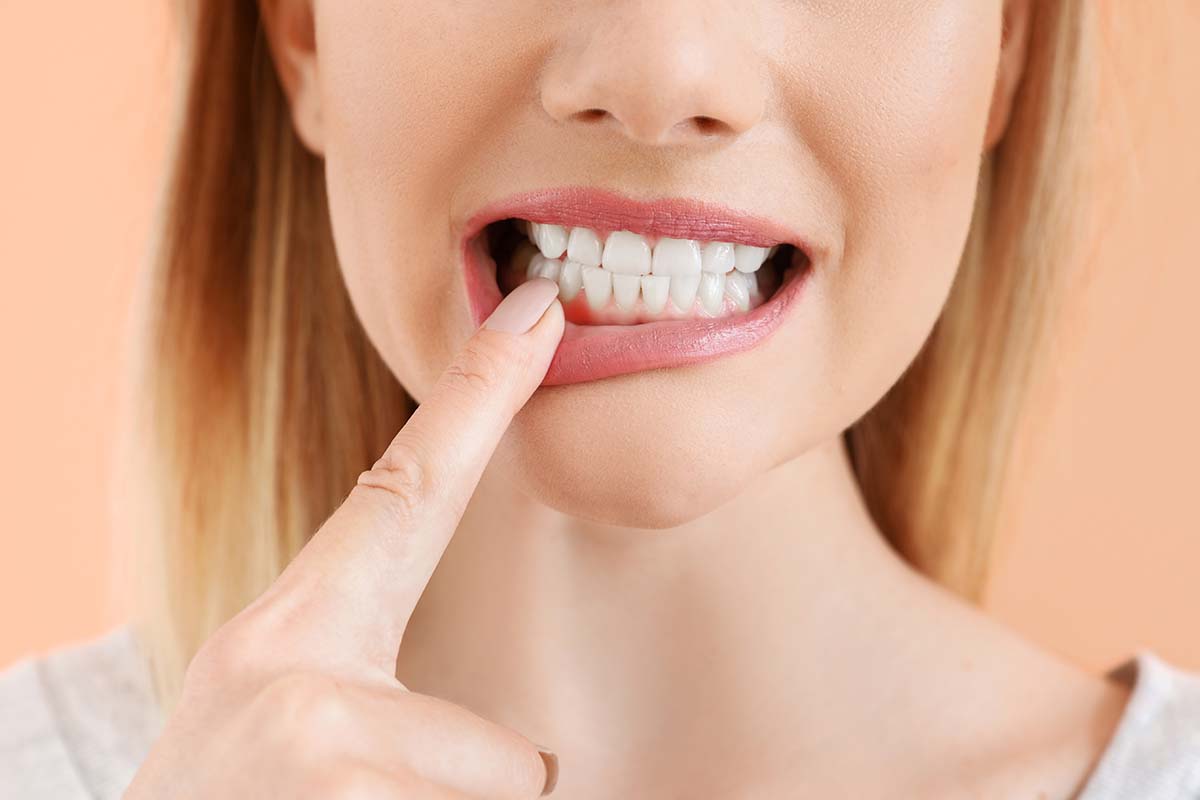In recent years, laser gum surgery has become more widespread for treating moderate to severe gum disease. Laser stands for light amplification by stimulated emission of radiation. Dentists may recommend laser gum surgery in lieu of non-laser surgeries, such as gum flap surgery. Laser gum surgery may also be used for other dental procedures. These include gum contouring to address a gummy smile for cosmetic reasons.
In this article, you will understand about advantages, disadvantages, procedure, aftercare and side effects of laser gum surgery. You should know whenever you want to treat your gum diseases, you have to visit an experienced and skillful dentist who knows the treatments and management of complications. It will reduce risks and side effects and also, recovery time of the treatment.
- There is potentially a decreased need for sutures with soft tissue lasers.
- Bleeding is minimized in treated soft tissues, as the laser promotes blood clotting.
- With some procedures, anesthesia is unnecessary.
- The chance for bacterial infections is lower because the laser sterilizes the area.
- Wounds can heal faster, and it’s possible for tissue to regenerate.
- The procedures may involve less damage to the surrounding tissues.
Soft tissue lasers can be absorbed through water and hemoglobin. Hemoglobin is a protein found in red blood cells.
These lasers are used to treat periodontitis, including killing bacteria and activating tissue regrowth.
Soft tissue lasers seal nerve endings and blood vessels while they penetrate the tissue. For this reason, many experience almost no pain after laser treatment. The lasers also promote faster healing of the tissue.
How does laser gum surgery work?
Lasers are tubes that use powerful, pinpointed light beams of thermal energy to perform multiple tasks during gum surgery. Lasers can:
- cut and remove diseased tissue
- coagulate blood vessels to form solid clots
- kill germs and bacteria
- sterilize the area
Lasers work by creating an energy change in atoms. The laser light shifts atoms from their current resting state to a stage known as the excited state. This causes the atoms to produce energy called spontaneous emission.
When the atoms return to a resting state, they emit particles of light called photons. This process provides the energy needed to perform certain functions, such as cutting tissue without the use of a blade.
Targeted areas for laser gum surgery
Laser gum surgery can be done on the gums in any quadrant of the mouth. The lasers used for this purpose are designed to treat soft tissue.
Laser surgeries can also be done on and in teeth. These procedures use different types of lasers that are designed to treat hard tissue.
Preparing for laser gum surgery
General anesthesia isn’t used for laser gum surgery. Only local anesthesia is needed, so you won’t need to fast before the procedure.
Wear comfortable, warm clothing. Often, surgical areas are kept cool to reduce bacterial growth in the environment.
Remove nose rings and tongue piercings.
If you have long hair, don’t wear a ponytail or bun. You’ll have your head resting against the chair for several hours, and a ponytail or bun may cause discomfort.
Procedure for laser gum surgery
The laser-assisted gum surgery procedure, is often used to treat gum disease.
Here’s what you can expect for laser gum surgery:
- Your periodontist will place the fiber optic tip of the laser at the top of the periodontal pocket. The laser is about the size of three human hairs.
- The laser will use pinpointed light to remove diseased and inflamed gum tissue from the pocket. (The laser is designed to only remove diseased tissue. It does not remove or damage healthy gum tissue. The laser also removes disease-causing germs and bacteria from the periodontal pocket.)
- Once the pocket is cleaned of damaged tissue and bacteria, the laser is set aside.
- Your periodontist then uses an ultrasonic cleaning tool to break apart and remove tartar and calcifications with sound waves.
- The laser is reintroduced into the pocket to deep clean the bottom and eliminate telltale debris.
- The laser also sterilizes tissue and bone, and stimulates formation of a blood clot. The blood clot speeds healing and helps gum tissue reattach to the tooth. This eliminates the need for stitches.
If you’re having your entire mouth done, you may need two visits that last 1 to 2 hours each.
A single quadrant can be finished in 1 to 2 hours.
Procedure for laser gummy smile surgery
Here’s what you can expect for gummy smile surgery:
- If inflammation or infection is causing excess gum tissue, your periodontist’s first step will be a scaling and root planning procedure.
- Then, a laser procedure can sculpt and contour the gums. A periodontist or an orthodontist can do this.
- During the procedure, a soft tissue laser will remove excess gum tissue.
- The laser will also cauterize the tissue. This helps reduce bleeding and postsurgical discomfort.
- Your dental specialist may also use the laser to reshape the underlying jawbone.
What to expect after laser gum surgery
Some people resume their normal activities the day following surgery. Others may take a few days to feel completely up to speed.
You can expect to feel mild soreness for several days. Other temporary side effects include:
- slight bleeding
- minor swelling
- discoloration of gum tissue
Aftercare instructions might include the following:
The healing process generally lasts a week. During that time, your periodontist may recommend you:
- not brush or floss the affected area
- rinse your mouth and let the water or mouthwash fall out gently instead of rinsing and spitting
- eat a soft diet
- abstain from using nicotine products such as cigarettes
In the first 1 to 2 days, your periodontist may recommend you rinse your mouth every few hours with warm salt water to help soothe your mouth. Mix 1/2 teaspoon of salt in 250 mL of water. Make sure the water isn’t too hot or cold.
Laser surgery can decrease gum disease. However, to keep your mouth clean and free from infection, you must maintain good oral hygiene habits. These include:
- daily brushing and flossing
- seeing a dentist twice a year for preventive care and cleaning
Disadvantages of laser gum surgery
- Lasers can’t be used on teeth that already have certain types of filling, such as metal amalgam.
- Hard lasers can sometimes injure tooth pulp.
- Some laser procedures still require anesthesia.
- Drills are still sometimes needed to complete fillings, including shaping, adjusting the bite, and polishing the filling.
- Certain procedures can’t be done with laser treatment, depending on the preexisting surrounding tissue or components involving the tooth or gums.
- There is a risk of gum injury.
Are there any risks or side effects for laser gum surgery?
There are many types of lasers, and none of them are one-size-fits-all. Lasers rely on varying wavelengths and power levels. Using the wrong laser can damage gum tissue. For this reason, it’s important to see a professional who has been trained in laser treatments. Other possible complications may include:
- infection
- scarring
- permanent tissue color change
Because the laser sterilizes the area, infection is not common. However, call your dental professional immediately if you notice any signs of infection. These include:
- swelling
- oozing
- worsening pain
- fever
How much does laser gum surgery cost?
The cost of laser gum surgery to treat gum disease ranges based upon several factors. These include the amount of work you need done, type of laser and your geographic location. Laser gum surgery may be done with a Nd:YAG type of laser. If you have dental insurance, your dentist will usually pay at least a portion of the cost. In some instances, a free consultation may be available before booking the procedure. Your initial consultation will include X-rays. If a scaling and planing procedure is done before laser gum surgery, the fee may cost higher. If you’re having laser surgery to correct a gummy smile, insurance most likely won’t cover it. Gummy smile correction is considered a cosmetic procedure.
Takeaway
Laser gum surgery is used for dental procedures, such as treating gum disease. It’s also used to contour the gums and eliminate gummy smile. Since there’s no scalpel or cutting, laser gum surgery eliminates the need for stitches and reduces postoperative bleeding. When this procedure is done to treat gum disease, insurance often covers it.


